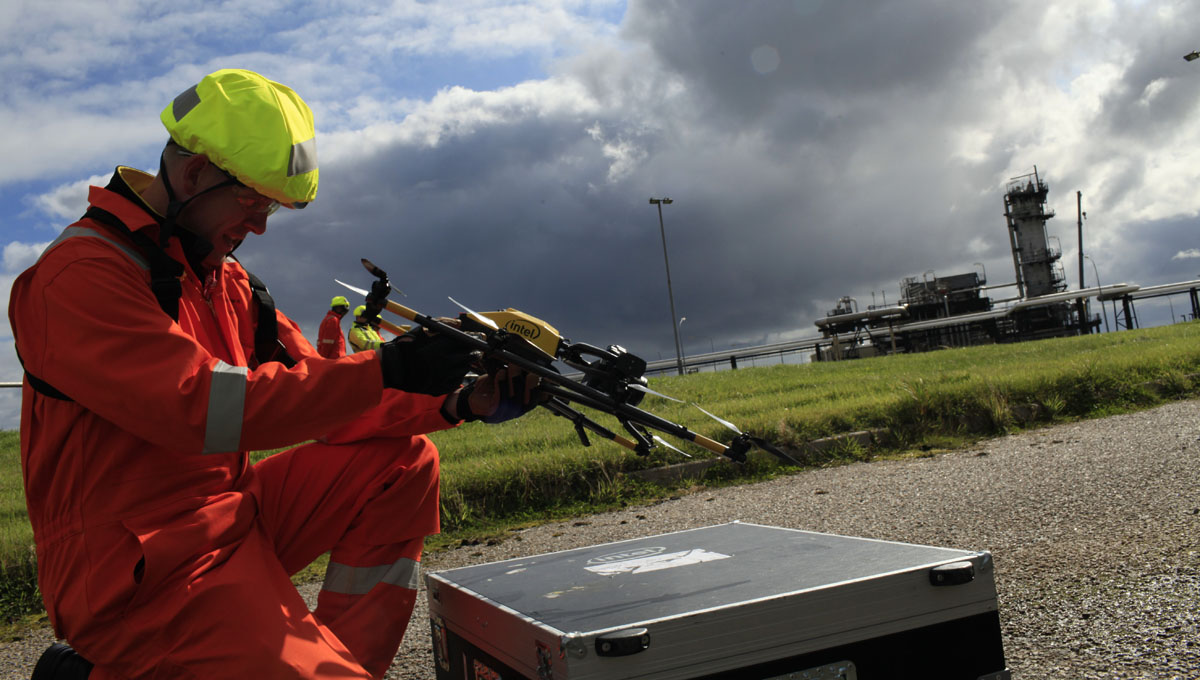Nowadays, inspecting large facilities using traditional methods isn’t the most efficient way, especially when discussing return on investment (ROI) and workers’ safety. Facility shutdowns mean a stoppage in services/production, leading to financial loss. Additionally, workers in this industry rely on harnesses and cable equipment to hang mid-air while manually collecting information on the structure. To say these are harsh environments that workers at risk is an understatement.
These facts make the work that Cyberhawk is doing so important, which ties into update they just announced. Together with Intel and its Intel Falcon 8+ system, they have successfully inspected a gas terminal in St Fergus, Scotland, proving once again how commercial drone technology helps to drive business transformation.Founded in 2008, the Scotland-based company Cyberhawk saw a gap in the market to use UAVs for asset inspection, and it now operates worldwide in more than 25 countries with offices in Houston, Abu Dhabi, and Kuala Lumpur. The company performs close visual and thermal inspections of industrial assets both on- and offshore, and also provides customers with a full inspection report compiled by industry qualified engineers. In the past, we covered a wind turbine inspection performed by Cyberhawk, and discussed its place in the drone industry.“Flying in Scotland, the devices have to withstand strong winds,” said Chris Fleming, Cyberhawk CEO. “The Intel Falcon is perfect for that because it has the highest wind tolerance and the best power-to-weight ratio of any platform on the market.”Specifically designed for operations like inspections, the Falcon 8+ can fly around electromagnetic interferences and magnetic field disturbances. With the triple redundant autopilot, the drone easily avoids objects automatically while in flight.During the St Fergus operation, the drone alone captured 1,100 images, translating to 12GB of data, over the span of one to two days, whereas using conventional methods typically take a three-man team three days to achieve.“The way we conduct inspections is changing,” said Anil Nanduri, Vice President of the Intel Drone Group, “Drones make inspection workflows faster, cheaper, and safer. The technology is mature enough to be adopted into the workflows of our customers.”In this kind of operation, using a drone means reduced employee risk, increased speed and accuracy, and no need for facility shutdowns, resulting in $1 to $5 million in savings per day in potential production loss during the mission.“In the last 20 years that I’ve worked in the inspection industry, drones are the biggest single change we’ve seen to-date,” added Chris Fleming.Subscribe
The information you submit will be stored and used to communicate with you about your interest in Commercial UAV News. To understand more about how we use and store information, please refer to our privacy policy.
November 17, 2017
Cyberhawk Performs a Gas Terminal Inspection with Intel Falcon 8+
















Comments